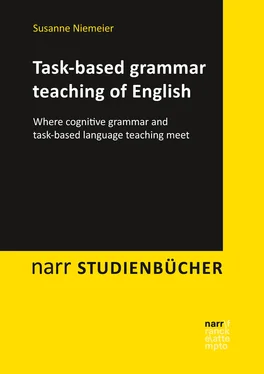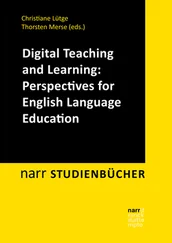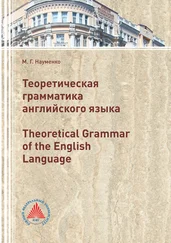To focus on form is definitely necessary and relevant, but the approach outlined in this book wants to go one step beyond this by suggesting that it makes more sense to focus on form at the very first introduction of a new grammatical phenomenon and not as a retrospective action. Form and meaning should not be seen as two opposite issues but should instead be seen as inextricably intertwined, as is also suggested by cognitive grammar. In a communicative classroom, both lexical and grammatical aspects should contribute to meaning. Task-based language teaching as the latest development among the communicative approaches to foreign language teaching offers the potential to integrate form and meaning at the same time, in a holistic and learner-centred way. Before such an integration can be addressed in more detail, the next chapter first introduces the task-based approach, focusing on its development, its characteristics, the changed learner and teacher roles it suggests as well as on divergent views on the role grammar should play in this approach.
ACHARD, Michel (2008): “Teaching construal: Cognitive pedagogical grammar”. In: ROBINSON, Peter/ELLIS, Nick C. (eds.): Handbook of cognitive linguistics and second language acquisition . London: Routledge, 432–455.
CAMERON, Lynne (2001): Teaching languages to young learners . Cambridge: Cambridge University Press.
DOUGHTY, Catherine/WILLIAMS, Jessica (eds.) (1998): Focus on form in classroom second language acquisition . Cambridge: Cambridge University Press.
ELLIS, Nick C. (2002): “Frequency effects in language processing: A review with implications for theories of implicit and explicit language acquisition”. Studies in Second Language Acquisition 24 (2), 143–188.
ELLIS, Rod (2003): Task-based language learning and teaching . Oxford: Oxford University Press.
HINKEL, Eli (ed.) (2016): Teaching English grammar to speakers of other languages . London: Routledge.
HULSTIJN, Jan H./DE GRAFF, Rick (1994): “Under what conditions does explicit knowledge of a second language facilitate the acquisition of implicit knowledge? A research proposal”. AILA Review 11, 97–112.
KRASHEN, Stephen D. (1982): Principles and practice in second language acquisition . Oxford: Pergamon.
LONG, Michael (2000): “Focus on form in task-based language teaching”. In: LAMBERT, Richard D. / SHOHAMY, Elana (eds.): Language policy and pedagogy . Amsterdam: Benjamins, 179–192.
MACWHINNEY, Brian (1997): “Implicit and explicit processes: Commentary”. Studies in Second Language Acquisition 19, 277–282.
NASSAJI, Hossein (2010): Teaching grammar in second language classrooms . London: Routledge.
NORRIS, John M./ORTEGA, Lourdes (2000): “Effectiveness of L2 instruction: A research synthesis and quantitative meta-analysis”. Language Learning 30 (3), 417–528.
NUNAN, David (2015): Teaching English to speakers of other languages . London: Routledge.
RICHARDS, Jack C./RODGERS, Theodore S. (2014 3): Approaches and methods in language teaching . Cambridge: Cambridge University Press.
SPADA, Nina/TOMITA, Yasuyo (2010): “Interactions between type of instruction and type of language feature: A meta-analysis”. Language Learning 60 (2), 263–308.
SWAIN, Merrill (2000): “French immersion research in Canada: Recent contributions to SLA and applied linguistics”. Annual Review of Applied Linguistics , 199–212.
TARONE, Elaine E./SWAIN, Merrill (1995): “A sociolinguistic perspective on second language use in immersion classrooms”. Modern Language Journal 79 (2), 24–46.
VANPATTEN, Bill/WILLIAMS, Jessica (eds.) (2013 2): Theories in second language acquisition . London: Routledge.
WIDDOWSON, Henry (1990): Aspects of language teaching . Oxford: Oxford University Press.
2. Task-based language teaching
Over the last few decades, research into second language acquisition (SLA) has been gaining more and more ground and has finally come to be fully accepted as a scientific field. New theories on learning and teaching, theories on motivation, theories on coding, storing and retrieving information, theories on learner and teacher personalities, types and roles have been developed and traditional approaches have been discarded to a certain extent. Instructed foreign language learning is no longer seen (as KRASHEN had still claimed in the 1980s) as relying on completely different mental processes than natural second language acquisition but these two possibilities to acquire/learn another language are today rather seen as having quite a lot in common.
In natural second language acquisition, i.e., when somebody acquires a new language by just “picking it up” from their surroundings, the focus is normally exclusively on communication, as one wants to understand and wants to be (and usually needs to be) understood as well. Since communicative language teaching approaches – and with them the focus on communication and communicative success – have taken centre stage, the notion of ‘communication’ has become the buzzword in seminars on foreign language teaching methodology and in teacher training as well as in curricula for all school types, and also in the Common European Framework of Reference for Language (CEFR). The CEFR even implicitly recommends task-based teaching when it states that the approach which is needed in foreign language classrooms “is an action-oriented one in so far as it views users and learners of a language primarily as ‘social agents’, i.e. members of society who have tasks (…) to accomplish (…) within a particular field of action” (COUNCIL OF EUROPE 2001: 9).
In contrast to the teacher-centred approaches such as Grammar-Translation and Audiolingualism, which were briefly outlined in the previous chapter, task-based language teaching can be seen as learner-centred and meaning-oriented and has its origins in communicative language teaching (CLT)1. NUNAN (2015: 10) even calls it “the methodological ‘realization’ of CLT”. However, it can be argued that this statement does not go far enough, because task-based language teaching normally goes (or should at least go) beyond what communicative language teaching has offered, as it focuses primarily on the learner instead of only on the communicative purpose of language. Furthermore, it highlights the idea of topically structured communication and not just of communication as such, because learners are presented with tasks on a specific topic and communicate among each other about the given topic.
In a sociocultural view of second language acquisition, communication (or rather interaction) is seen as the essence of learning, as described by R. ELLIS (2003: 177): “acquisition occurs in rather than as a result of interaction. From this perspective, then, L2 acquisition is not a purely individual-based process but shared between the individual and other persons”. As communication and interaction are the reasons why language exists, it does not exactly come as a surprise that language is acquired by learners while they are using it, either with the teacher or with other learners or later on in real-world situations. It is up to the teacher to select suitable tasks and topics, not only keeping the learners’ age level, motivation and interests in mind but also the usefulness of the elicited language for real-world communication, i.e., outside of the classroom. As R. ELLIS (2003: ix) argues, “if learners are to develop the competence they need to use a second language easily and effectively in the kinds of situations they meet outside the classroom they need to experience how language is used as a tool for communicating inside it”.
Читать дальше












